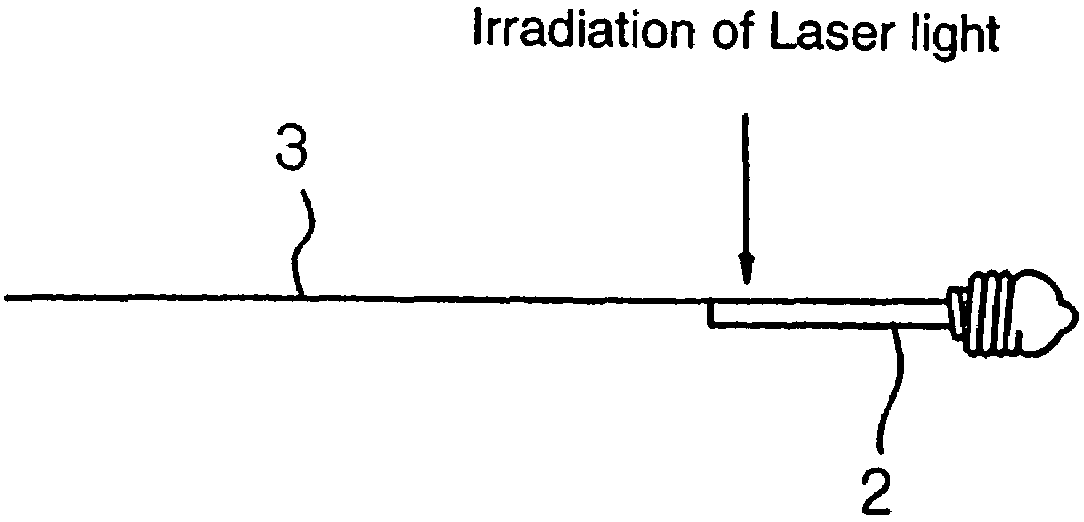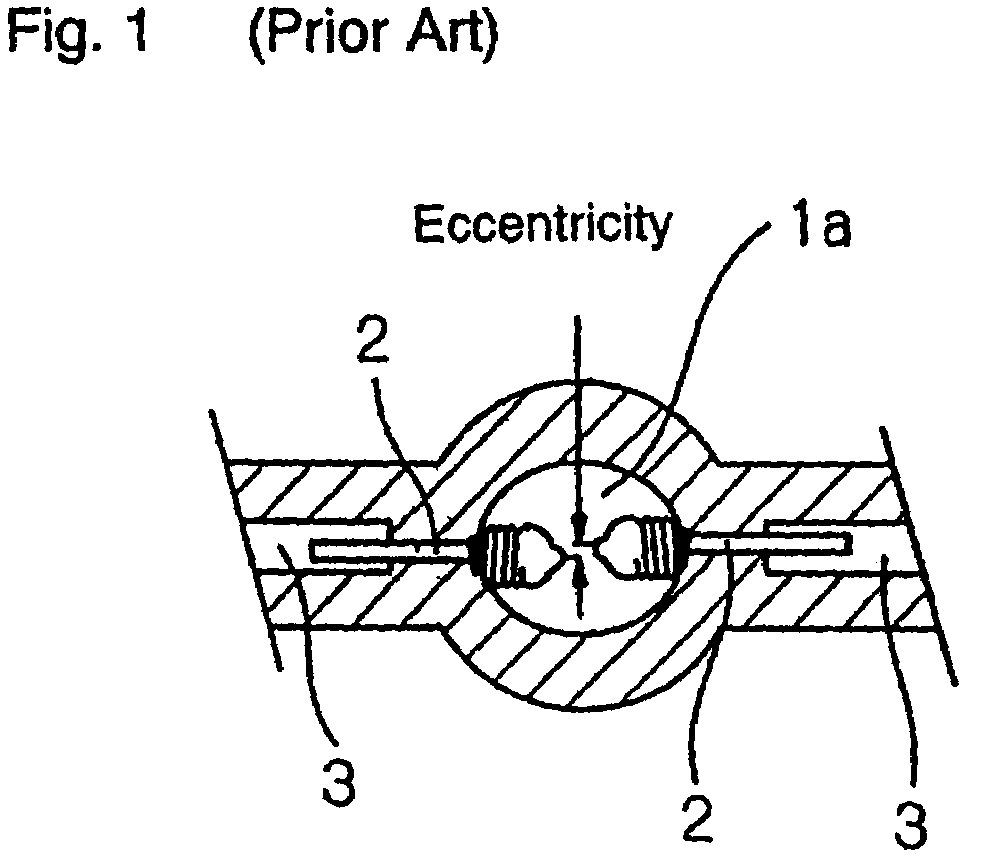Method of manufacturing a high-pressure discharge lamp
a manufacturing method and high-pressure discharge technology, applied in the manufacture of electric discharge tubes/lamps, electrode assembly manufacture, electric discharge system manufacture, etc., can solve the problems of difficult pressure application, failure of tungsten electrodes themselves, and electrodes which oppose each other in the lamp, so as to improve the reliability of the resulting electric connection and the reliability of the lamp
- Summary
- Abstract
- Description
- Claims
- Application Information
AI Technical Summary
Benefits of technology
Problems solved by technology
Method used
Image
Examples
Embodiment Construction
[0033]Referring first to FIG. 2, an ultra high-pressure mercury lamp, in one embodiment of the present invention, comprises lamp tube 1 made of quartz glass and having a central section formed in a spherical shape, and a pair of tungsten electrodes 2 arranged opposite to each other in central spherical space (discharge chamber) 1a of lamp tube 1. Each of tungsten electrodes 2 is connected to external lead wire 4 of a molybdenum rod through molybdenum foil (Mo foil) 3. Such an electrode assembly has part of tungsten electrode 1, molybdenum foil (Mo foil) 3, and part of external lead wire 4 sealed with quartz glass at one end of lamp tube 1. In this way, spherical space 1a of lamp tube 1 is hermetically sealed. While the illustrated lamp is intended for AC lighting, it can be used for DC lighting when an electrode functioning as an anode is made larger than an electrode functioning as a cathode.
[0034]Mercury, and an inert gas containing a halogen gas component are enclosed in spherica...
PUM
| Property | Measurement | Unit |
|---|---|---|
| angle | aaaaa | aaaaa |
| pressure | aaaaa | aaaaa |
| angle | aaaaa | aaaaa |
Abstract
Description
Claims
Application Information
 Login to View More
Login to View More - R&D
- Intellectual Property
- Life Sciences
- Materials
- Tech Scout
- Unparalleled Data Quality
- Higher Quality Content
- 60% Fewer Hallucinations
Browse by: Latest US Patents, China's latest patents, Technical Efficacy Thesaurus, Application Domain, Technology Topic, Popular Technical Reports.
© 2025 PatSnap. All rights reserved.Legal|Privacy policy|Modern Slavery Act Transparency Statement|Sitemap|About US| Contact US: help@patsnap.com



